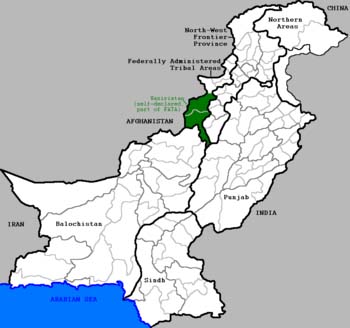Nov 05, 2025
Nov 05, 2025
 The fact that Jihadistan has gradually become an empirical reality is borne out by the fate of Pakistan's efforts to return the region to its sovereignty. The turning point came in 2006 when President Pervez Musharraf, in Ashley J. Tellis' words, ordered "major formations from the Army XI Corps and elite Special Services Group into the FATA (Federally Administered Tribal Areas)" ostensibly to root out the Taliban and Al Qaeda and remove them once and for all from Pakistani soil. The undertaking was a dismal failure, which cost the army over 600 lives. "The core members of the Taliban and Al Qaeda leadership survived and remain active antagonists," Tellis concludes. (Carnegie Policy Brief, December 2007).
The fact that Jihadistan has gradually become an empirical reality is borne out by the fate of Pakistan's efforts to return the region to its sovereignty. The turning point came in 2006 when President Pervez Musharraf, in Ashley J. Tellis' words, ordered "major formations from the Army XI Corps and elite Special Services Group into the FATA (Federally Administered Tribal Areas)" ostensibly to root out the Taliban and Al Qaeda and remove them once and for all from Pakistani soil. The undertaking was a dismal failure, which cost the army over 600 lives. "The core members of the Taliban and Al Qaeda leadership survived and remain active antagonists," Tellis concludes. (Carnegie Policy Brief, December 2007).
06-Jul-2008
More by : Harold A. Gould